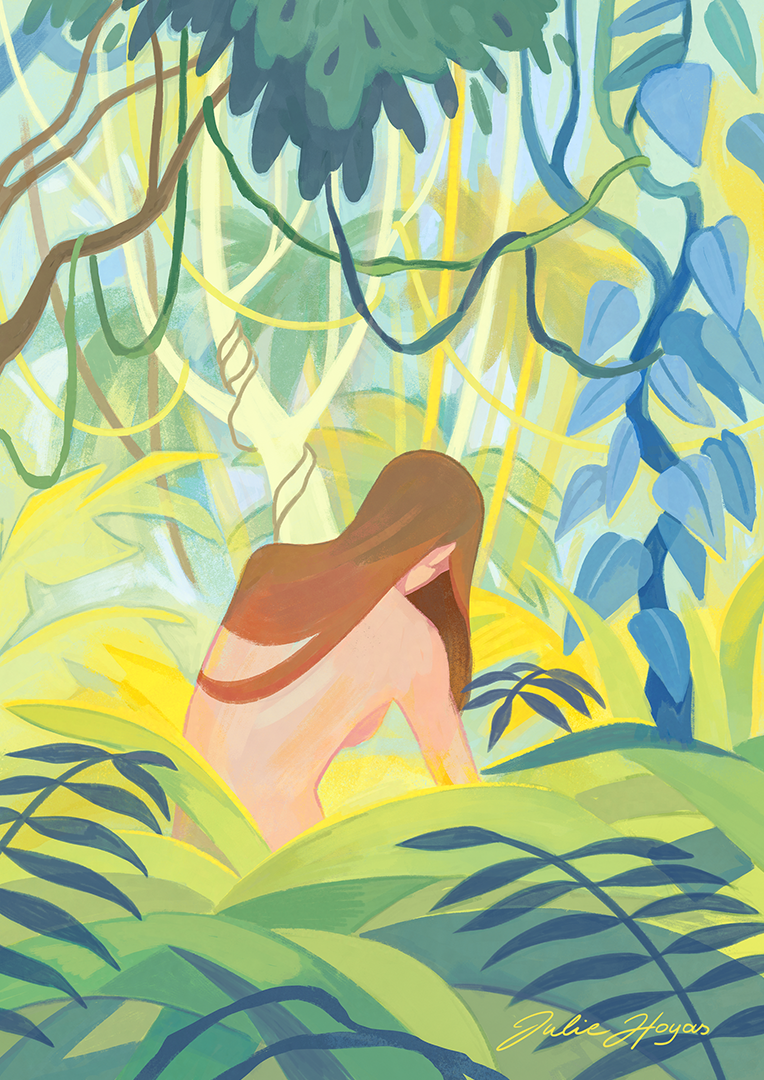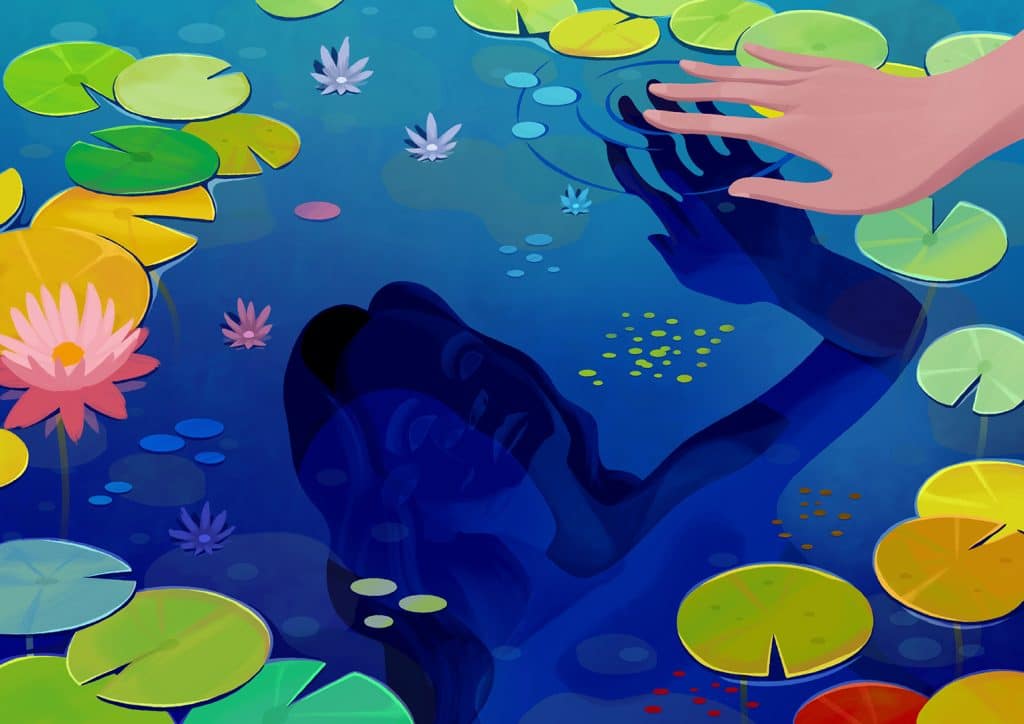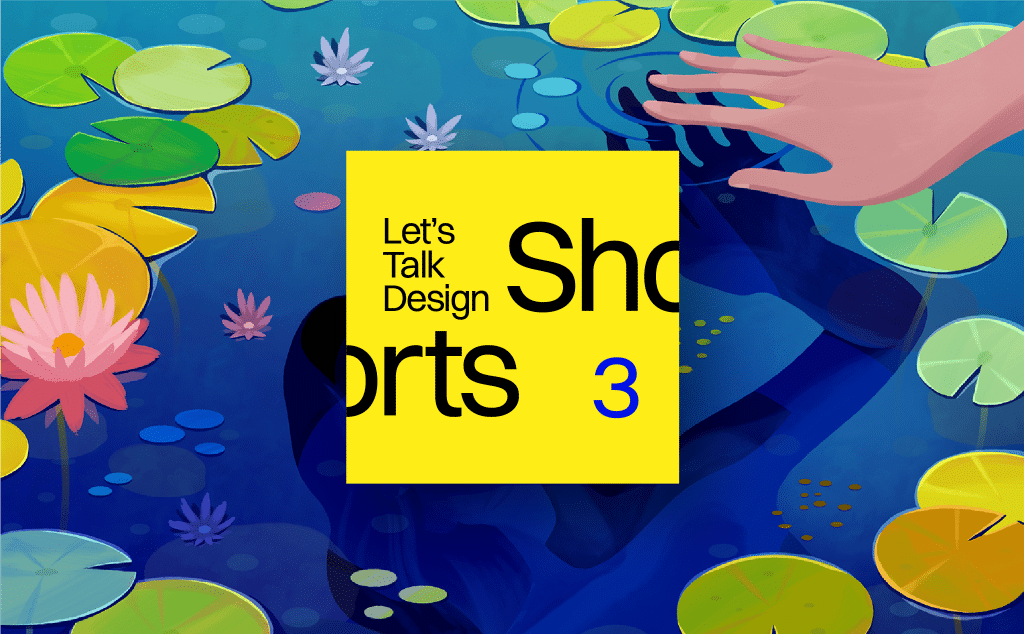In this episode, I ask Brussels-based illustrator Julie Hoyas 6 questions. Julie worked at an animation and motion design studio and slowly moved into working as a freelance illustrator.
Episode 3 of Shorts is available on
YouTube Spotify Apple Podcasts Google Podcasts



Transcript
Timothy Helmer: Hi, and welcome to Shorts, our short version of Let’s Talk Design, where I, Timothy, interview designers to find out what makes them tick. In this episode, I ask six questions to Julie Hoyas, a Belgian illustrator living in Brussels. So, Julie, how did you get started?
Julie Hoyas: I have been drawing since I was little, and school wasn’t my thing. I prefer to draw in my notebooks instead of listening to the teacher. It was easier for me to stay focused on drawing for hours. After many different schools, I decided to continue what I was good at. And I did a course in graphic design at Saint Luc School in Brussels. From that moment, I felt in the right place and everything made sense.
After that, I worked in an animation and motion design studio as an illustrator and storyboarder. And now, after a few years, I finally became a freelance illustrator.
Timothy Helmer: Can you tell us about your typical workflow when approaching a commissioned project?
Julie Hoyas: It depends on the client and the project. But, in general, I like to begin with a mood board.
I try to understand what the client’s expectations are. I try to figure out if the client sees me as a visual maker or an artist. Do they want my personal style? Or are they looking for my graphic skills to help out? I can refuse if a project is too different from my universe, or I can accept if I switch to just a visual maker.
When I worked as an illustrator for a studio, I had to be able to do different styles of illustrations. So it’s easy for me to do that, especially for animation videos. But it’s not the same approach, because I am totally at the service of my clients as an image maker, and if my clients want my vision and my universe for their project, I can take the lead and guide them in my universe as an artist.
For both situations, I try to have various validation checkpoints, so that I don’t have to go back when it’s too late. For example, at first, the sketch, the colour range, the character design, and so on. Sometimes, the process can get a bit wild, depending on the client’s vibes. But, it’s usually great if you can put some structure around things.
Timothy Helmer: What do you believe sets exceptional illustrations apart from mediocre ones?
Julie Hoyas: For exceptional illustrations, I think it needs two or three important things. First of all, whatever we do and how we do it, We need to do our thing perfectly. Whatever the method or the medium. If you are better at storytelling or better at abstract composition or better at realistic drawing, you have to master your own craft.
Mastering your own thing after a lot of work, I think it’s a good beginning for a good illustration. After that, I think we need to do things with passion. Personally, I see a huge difference between an illustration made with passion or not. And the viewer feels this very much too. And finally, for an awesome illustration, sometimes we need a bit of luck.
Because sometimes we are on the top of the wave of our travel creativity, and sometimes we are in down. At times, planets seem to be aligned and everything comes easily. That’s why it’s important, if it’s possible, not to rush ourselves. And if it doesn’t feel right, and if we can afford it, it’s good to take a little break and refill energy.
We have to listen to ourselves and stay connected with our creative energy in a healthy way.
Timothy Helmer: How do you continue developing your craft beyond formal education and professional practice?
Julie Hoyas: I do a lot of personal projects. I need to do this for myself and to feed my universe. My images change like myself, so I try to be not static in my mind.
If I don’t do new things in my life, I end up not doing new things anymore in my artwork. As a freelancer and an adult, sometimes a routine is coming up. And if I stay too long at my desk alone at home, I risk turning around in my head. I need to be in movement in my mind. It doesn’t need to be big.
Smaller things can drive me, like new music, when the weather changes. Working in the nature, social interaction, a movie, a game, an exhibition, whatever. I need to be fully alive to continue to feed my practice. And sometimes, I need to take a big break. It’s always scary to stop creating, but after that, I have, I always have a big dash of inspiration to do a lot of things.
In any case, I follow a lot of artists who make me want to do things or open my eyes to other possibilities. Creativity is all about connection, so we need to be fed by our own environment and our lives.
Timothy Helmer: How do you strike a balance between personal expression and commercial viability in your pieces?
Julie Hoyas: For me, there are three ways of saying this.
There is my personal work I do without thinking about the commercial aspect. I do it for myself and to fuel my creativity, develop my skills and feed my portfolio. I can sell illustrations, and create art prints, but I am the only one in charge. Then, on the opposite, there are pure freelance commercial jobs for a client. I try not to include my ego and work purely as a visual crafter.
At the service of the client and the project. And finally, in between are more artistic commissions, where I have to include my own vision, style, and universe to match the client’s needs and goals. This is the most challenging kind of work. I have to listen to the client and create trust without losing my ambitions and aspirations.
It’s all about communication and understanding the value of your work. To be honest, it’s not always easy. That’s why it’s important to be clear with your client at the start of the project and understand what they really need from you. So, generally speaking, I see personal projects as practice, commercial projects as breathers, and commissioned work as challenges.
If you want to make a living as an illustrator and be happy with it, You need a comfortable space, enough time, a feeling of financial stability, respect, and interesting projects that challenge you. So, it may be good to cycle between those three kinds of projects.
Timothy Helmer: How do you think AI will influence your work?
Julie Hoyas: Big question. I’m not sure about how AI influences my work exactly, but I guess if I do more traditional stuff at the moment, maybe it’s not a coincidence. There are a lot of illustrators and designers on the market, more than ever. Creativity is everywhere and sometimes, like other artistic media, Illustration can become fast illustration, like fast food, fast fashion, fast music, and so on.
We want more and we want faster. And honestly, I don’t like to do fast illustrations. Sometimes I do that because it’s part of my work and I need to pay my bills. But, maybe it’s not a bad idea if fast illustration or corporate illustration can be realized by an AI. Maybe it will value our profession.
Because we don’t want to be a drawing machine without passion for our work. It’s probably, it’s probably better if a machine does this kind of thing. And I think there will always be people who want illustrations with dreams, stories, and passion behind them. I love to make digital illustrations because it’s a big playground to create a lot of things and express myself.
But now, I also want to do more traditional stuff to add value to my images and try to take time to do an original piece that I can touch. It’s very satisfying and a bit magical for me. Like a final print of a digital illustration, numerated and signed. It’s good if that’s magic and if the value of our work can be preserved.
With AI, we need to find new ways. To respect and think again about the value of our profession and our humanity. Otherwise, AI can be very practical like other tools to conceptualize an image or an idea for layout, presentation, and simulations. So, we’ll see. We can go back anyway, but we can protect artists and creators by protecting their copyrights.
To make sure we use this technology. Well,
Timothy Helmer: Thanks for listening or watching. You can subscribe to the series on YouTube and your favourite podcast app, feel free to comment, share tips and give feedback on those platforms. Your feedback is essential to improve this series. Let’s talk soon.

